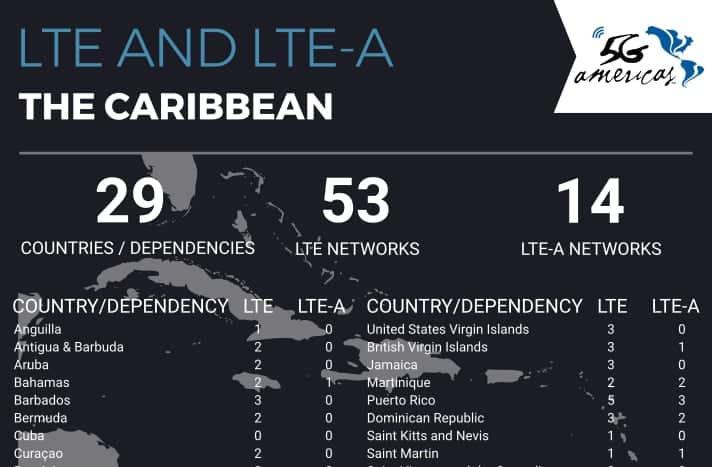
A new5G Americas infographic with information from TeleGeography revealed that 14 LTE-Advanced (LTE-A) networks were in operation as of June 2018 in a sample of 29 countries and dependencies of the Caribbean.
LTE-A networks are available only on 8 of the surveyed countries and dependencies, while the remaining 21 have not yet deployed the technology. Puerto Rico, the Dominican Republic, Guadeloupe, French Guiana, Martinique, the British Virgin Islands, the Bahamas and Saint Martin already benefit from the advantages of this technological evolution in wireless services.
Meanwhile, LTE is widespread in the region with 53 networks in 26 of the 29 territories. Only three countries and dependencies did not have operational LTE networks by the end of the first quarter of 2018 (1Q 2018): Cuba, Grenada and Saint Vincent and the Grenadines.
LTE-Advanced is an evolution of the LTE (4G) standard, defined for the first time in Release 10 (Rel-10) of the 3rd Generation Partnership Project (3GPP), which provides higher connection speeds, among other technological features.
According to the 3GPP, LTE-Advanced offers peak speeds of 3 Gbps in the downlink and 1.5 Gbps in the uplink. Among its main advantages, it features Carrier Aggregation, improved use of multi-antenna techniques, and support for Relay Nodes, which allows it to offer higher transfer rates, better performance and efficiency in the use of network resources.


